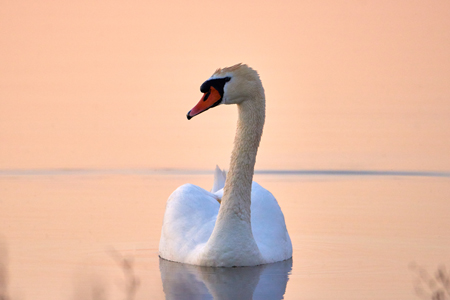|
|
|||||||||||||||||||||||
Utah County Birders
Newsletter
|
|||||||||||||||||||||||
 |
Contents
Monthly Meeting
Upcoming Field Trips
President's Message
Bird of the Month
Field Trip Reports
Printable Version
Thursday, January 9th, 2020, at 7pm
UCB Dinner at Golden Corral (225 W University Pkwy) in Orem. We will have a back room reserved for our group and will introduce the new board and the 2020 challenge. Pay on your own and join us for dinner!
January 1, from 8 am to 12 pm
New Year's Day Field TripMeet at the Salem Pond parking lot at 8 am.
Let's start the 2020 CHALLENGE year off with at least 20 SPECIES or more on the first day of 2020!!! (This is item #1 on the 2020 Challenge List)
January 4th, All day
Payson Christmas Bird CountThe Payson CBC will be Saturday Jan 4th. Meet at 7:30 am at the Payson McDonalds for assignments. Contact Bryan Shirley for more information. 801-722-9346 or
January 20, 8:30 am
Martin Luther King Jr. Day, led by Sam Phillips and Keeli Marvel.
Meet at 8:30am at the AF Park and Ride on Pioneer Crossing. We will carpool to Lee Kay Ponds and Decker Lake. This trip will also fulfill the challenge goal to see 20 birds on the 20th of the month. If the Brant is still around we'll try and find it as well.
|
President's Message -
January 2020 by Machelle Johnson |
|
|
Hello Birders, my name is
Machelle Johnson and I will be the Utah County
Birders club president for 2020! Did you know that
Keeli Marvel was our president for 7 years?? She
was fabulous, in fact the consensus was to just have
her keep on going! Keeli has a passion for birding
that has been inspiring to our group. She traveled
a lot and wrote about her sightings in her monthly
articles. She lined up interesting monthly
meetings for us, and was there for most of the field
trips and bird counts too! Thank you Keeli, you are
awesome, and lucky for us, Keeli will stay on board
as the program coordinator!
Now a little bit about me, I was born and raised in Orem. (Mike and I moved to Provo 3 years ago.) I
attended Orem High School where I met my husband
Mike, and got my start in birding through a class
called Unified Studies with Al Davis and Cheryl
Lewis as the teachers. In that daily 3 hour block
class we learned everything from Humanities, Old
English, poetry and water color, to geography, fly
fishing and cross-country skiing. We did a unit on
bird ID and it really interested me. I got a Golden
Field guide and read it like a novel, couldn't put
it down. I did a lot of birding in the late 70's
and most of the 80's, then I had to adult and work
full time and be a mom. Mike and I have 4 kids, all
boys except for 3, and 5 grandkids, all girls. We
do a lot of camping and 4-wheeling together. Mike
is not a birder, in the Unified Studies class, he
got hooked on fly-fishing and trees and plants.
When we go camping he goes fishing and I go
birding.
I would say my 'hook bird' is the Western
Meadowlark, that song! I love the vibrant yellow
and the melodious song. My favorite birds are
Owls. Mysterious, secretive, spectacular! Like
anyone who collects 'things', I have a lot of owl
'things' at my house, figurines, pictures, drawings,
books, pellets. It's not weird, not obsessive, not
at all. My grandkids call me Grandma Hootie, or just
Hootie. It's great.
I'm not what you would call 'well traveled' as a birder. I really enjoyed the challenge year when we had to visit all 29 counties in Utah for Gold. I love Utah birding, we have a great variety here. Other than that I've only birded in Wyoming, California and Florida. I get to go on an Alaskan cruise this summer, and Texas and Panama or Costa Rica are on my bucket list. Also, I'm not a 'great' birder either. I know some stuff, and I enjoy it a lot, but as far as being a 'go-to', I'm not that, I'm still learning, but I love the process of seeing and identifying birds and I learn a lot from all of you!
I work at the BYU Student Health Center as the business office supervisor. I officially joined the UCB group in 2012. I'm looking forward to a great challenge year, the 2020 challenge will be really fun, it should get us all out and about throughout the state! Invite your friends and family out on field trips and to our monthly meetings, and take them to your favorite birding spots. Join our Facebook page and sign up for the newsletter email. Get out there, get involved! And especially - have fun! Good Birding everyone, see you out there! Thanks,
Machelle
,__,
(0,0)
/)_)
""
|
|
Mute Swan
(Cygnus olor)
by Asher and Jesse Lee |
||
As we drive past the small pond along the old highway, Asher sits up in his seat
and scans the rows of cattails. Winter is closing in, and he is religiously
searching for his large feathered friend who he has aptly nicknamed ‘Snowy’.
This has become a daily ritual. We are anxious to know if he will be forced to
leave for warmer waters or if he will maintain the keep of his small kingdom
once the ice takes over.
Snowy is an adult mute swan, who is easily recognized by his long neck, black feet, and bright orange bill. He has been a regular in this location for the past few years, but we are not really sure if he is a pet or if he just happened upon this particular pond and declared it as his domain. According to allaboutbirds.org, Mute Swans in North America have descended from swans that were imported from Europe from the mid 1800s through early 1900s to adorn large estates, city parks, and zoos. Since this time, escapees have established breeding populations in many areas across the United States. In many cultures, these large beautiful birds symbolize romance and fidelity. The mute swan gained fame as the lead in Hans Christian Anderson’s ‘The Ugly Duckling’. In this short story, a homely young cygnet was not accepted by the other barnyard fowl until he matured into a majestic swan. Interestingly enough, the swan’s woes of unacceptance didn’t end with the fairy tale. Mute swans are seen by many as a troublesome invasive species that destroy fragile wetland and aquatic habitat while chasing out other birds and animals. The mute swan’s feeding habits can devastate grass beds and disrupt important habitat for fish, shellfish and macroinvertebrates. To feed, Mute Swans stick their heads underwater and tear at plant life while searching for insects, fish, frogs, and aquatic vegetation. Adults can eat up to eight pounds of plant matter a day and can uproot an additional 20 pounds while feeding. In places like the Chesapeake Bay, they have crowded out other birds, most
notably Black Skimmers and Least Terns. Conservation organizations, including
the Audubon Society, have shown support in controlling Mute Swan populations,
while animal welfare groups and other organizations like ‘Save our Mute Swans’
fiercely defend the birds.
As the snow falls down upon the pond, we wonder what will become of Snowy, and are reminded of the tale told by Hans Christian Anderson which echoes the worth of a seemingly homely, mute cygnet. References: https://www.allaboutbirds.org/guide/Mute_Swan/overview https://www.sej.org/publications/national-us/when-mute-swans-become-a-menace-what-should-be-done https://en.wikipedia.org/wiki/Mute_swan http://www.utahbirds.org/RecCom/AuxiliaryList.htm
|
||
|
|
||
|
|
|
|
|
14 Dec 2019 Provo Bird Count
by Bryan Shirley |
||
|
This year was the 120th year of the
Audubon Christmas Bird Count and the 48th year in Provo. We were plagued by bad weather and few birds. We missed species that we get almost every year like Ruddy Duck, Great Horned Owl, and Stellar's Jay. We got one species never before reported on our count - a Black Phoebe on the Skipper Bay Trail. We also had 4 Great Egrets and 1 Harris's Sparrow. Our total species for the day was 83, our lowest since the 1980s. Thanks to everybody who participated! Bryan |
||

